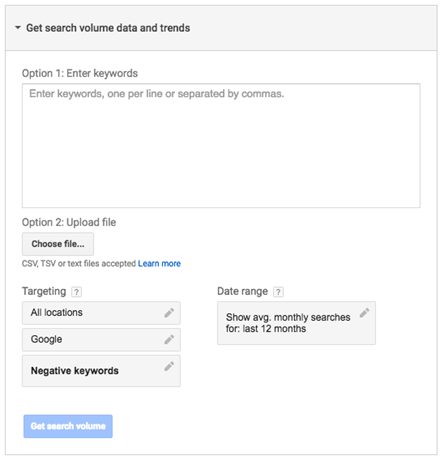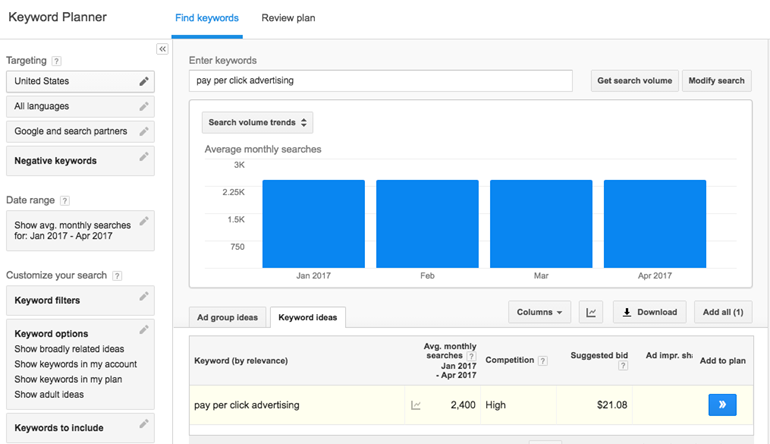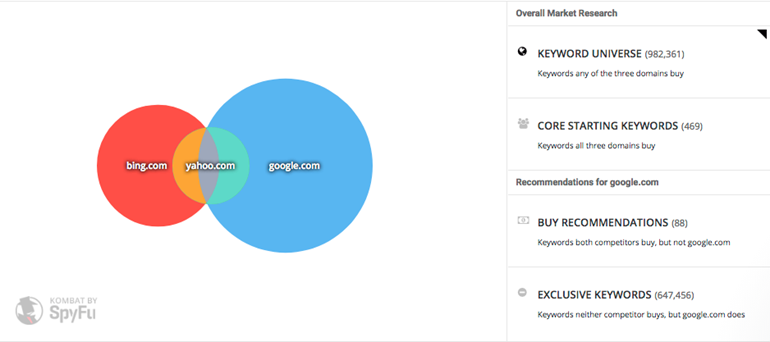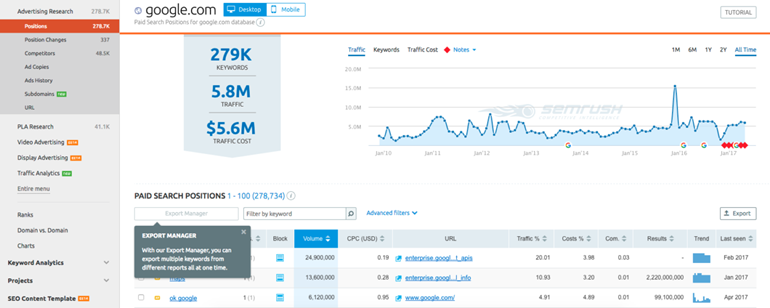Use These Competitor Tools To Improve Results Through Competitor Insights

Competitor insights are a key part of how we can improve performance and spike conversion rates. This happens through using a multitude of tools and data insights to form a summary about a specific set of competitors that are directly influencing change in SERPs or ad performance.
In today’s post, we will visit just a few of the top tools we can use to show value to our brand and clients and show a story of the competitor landscape.
1) AdWords Keyword Planner
Through this free tool provided inside of AdWords, we can glean several insights regarding the competitive nature of current keywords or new terms we want to add to a new or existing campaign. It is often easy to overlook the usefulness and how much information we actually do get regarding real insights to how often it’s searched, are there ads out there for this term, how much does it cost and is there seasonality to it?

By adjusting the initial parameters, we can get insights for either Google or Google and Search Partners, adjust our location targeting (I typically look at the United States or specific regions instead of “All Locations”), and we can also change our date range. I typically do 3-6 months to get a more accurate picture of current numbers. If we want to see larger competitor trends and seasonality of searched terms, we can open the range to 12mos.

Once we give Keyword Planner’s forecasting tool our keywords, it will tell us how competitive the keywords are in terms of advertisers showing for these terms based on our input parameters. We also see what the suggested bid is for an idea of budget and even if there are fewer competitors for a keyword, how much are those advertisers willing to currently pay to show their ads.
2) Auction Insights
This is Google’s Competitor auction Impression Share tool that shows competitor domains or brands depending on search or shopping, for ecommerce, and how they rank, outrank, overlap, and more compared to your specific keyword, ad group, campaign, or even whole account. This can be as granular or wide-viewed as you’d prefer. This can be pulled at the highest campaign level to see which competitors show based on all active campaigns for a particular date range or can be drilled down to either one keyword or a specific set of keywords to find which competitor domains show most often and where on the SERPs compared to your ads.

This is most helpful to find new competitors that have stepped into the SERPs after seeing a performance or spend decline. It can also indicate, when pulling multiple reports, comparing date ranges, which competitors have increased their bids, impression share and more may be competing more often with your ads that may also have changed how performance may look for a specific timeframe.

As an example, I have used auction insights reports to pull the impression share and overlap rates year over year to see which competitors have increased their rankings and overlap with ads. This helps in determining budget or strategy changes that may be beneficial in improving results.
3) SpyFu
I grouped these together as they are both keyword competitor insight tools that help identify changes in the competitor landscape. SpyFu focuses solely on Google Search for both Organic and Paid Advertising.
SpyFu’s advantage is their tool called “Kombat”, which will pull multiple domains and show the overlap, larger keyword ‘universe’ and non-competing keywords for those specific domains. This is helpful when pulling your own or your client’s domain and finding out how they stack up to the competition and if there are any areas of keyword growth that may not have been currently explored. SpyFu also has a couple other very helpful automated reports that can be run automatically and give insights into current and untapped terms and their competitive rankings according to the data SpyFu currently has.

4) SEMRush
SEMRush also focusing on keywords and search also has branched out further to Display, video, and shopping analysis and research to help make strides in all campaign types. Both video and Display advertising sections are beta, but video is only available to paid subscriptions.

SEMRush’s advantage is having multiple channel reports and research capabilities that SpyFu doesn’t currently offer. Display, for example, allows you to look at example ads, ad types, publishers and more. When this is used on a specific competitor it can help shape display strategies like where to show similar ads, which ad types to create and how to shape an audience and benefit statements that can grab a users attention away from the current ads being seen.

I have found both tools to be useful and have their advantages and disadvantages. My suggestion is to test out both and see which fits the needs of your business or agency.
Conclusion
There are a lot of other tools out there for both advertising and landing page insights that can be used to help stay in front of the competition. These can help build strategies and tactical changes to your brand and accounts to improve results. Another great tool is manual research. Don’t be afraid to search and go to your competitors landing pages. See what elements they use in their ads and pages to guide users to that next step. Are there elements that you can learn from or help guide you in creating a seamless user experience from the keyword to the final landing page that will increase those results? If you some of these tools along with your own research skills, you’ll be improving performance in no time!
If you would like to learn more about competitor insights, join myself and Jamie Smith, VP of BrandVudu, on Thursday at 1 pm EST for our webinar on How to Spike Your Conversion Rates Using Competitor Data.



